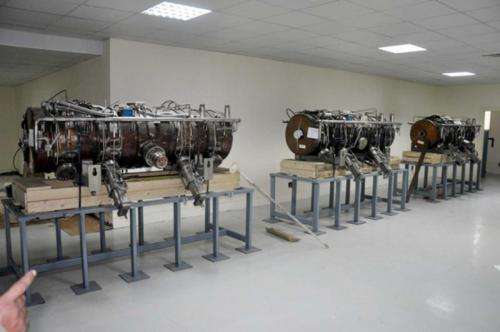SESAME breathes new life into LEP cavities

The 27-kilometre ring that today houses the Large Hadron Collider was originally built for its predecessor, the Large Electron-Positron Collider (LEP). LEP is still the most powerful lepton accelerator ever built.
When it started up in 1989, there were 128 copper radiofrequency cavities positioned inside the LEP ring to accelerate electrons and positrons. Radiofrequency cavities are metallic chambers containing an electromagnetic field that accelerated the particles in the beams.
Today, these cavities are no longer in use inside the ring. Instead, some have found new life as material for training, experiment, and display purposes.
"We will be using the cavities for accelerator physics and technology training to develop specific expertise, to be able to provide accelerator support for injection, repair and maintenance to the Synchrotron-light for Experimental Science and Applications in the Middle East (SESAME) project," says Hafeez Hoorani, professor of Physics at the National Centre for Physics, Quaid-i-Azam University in Islamabad, Pakistan.
Pakistan has just received five of LEP's cavities. Hoorani says he hopes that accelerator skills will help the South Asian nation develop medical accelerators, and in the future, to build their own light source.
Fourteen of the cavities will be sent to different museums in Spain, Norway, France, Denmark, UK, Hungary, and Poland.
More information: www.lightsources.org/facility/sesame
Provided by CERN




















